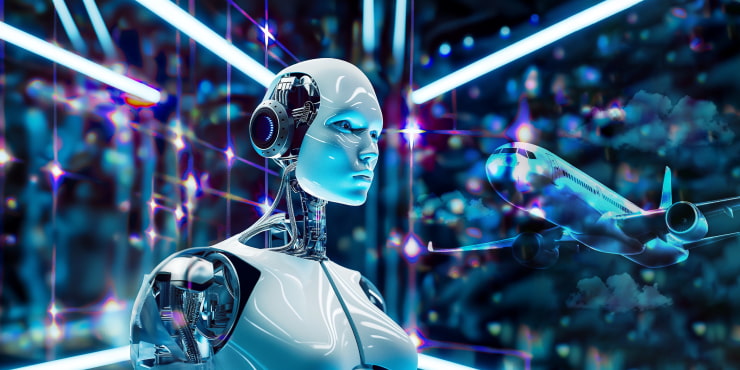The integration of AI in mission-critical aerospace software is reshaping how we view and interact with the vast skies above. As technology advances, the aerospace industry increasingly relies on artificial intelligence to enhance safety, efficiency, and innovation. The significance of AI in aerospace cannot be overstated, particularly in areas where reliability and precision are paramount.

The Role of AI in Aerospace
Artificial intelligence plays a pivotal role in modern aerospace applications. Its ability to process large datasets with speed and accuracy makes it an invaluable tool in developing and managing mission-critical software. From autonomous flight systems to predictive maintenance, AI is at the forefront of technological advancements.
Enhancing Safety with AI
Safety is a top priority in aerospace, and AI contributes significantly to this aspect. By analyzing flight data in real-time, AI systems can detect anomalies that could indicate potential failures. This early detection capability allows for preemptive maintenance and reduces the risk of accidents.
AI in Flight Operations
Incorporating AI in flight operations enables more efficient route planning and fuel management. By optimizing flight paths, AI helps reduce carbon emissions, contributing to a greener aviation industry.
AI in Aerospace Maintenance
Predictive maintenance is one of the most promising applications of AI in aerospace. AI algorithms analyze historical maintenance records and real-time sensor data to predict when components need servicing. This proactive approach minimizes downtime and extends the lifespan of aerospace components.
Reducing Operational Costs
By preventing unexpected failures and optimizing maintenance schedules, AI helps lower operational costs. This efficiency is crucial for airlines and aerospace manufacturers, where margins can be thin.
AI in Aerospace Design
The design phase of aerospace systems benefits immensely from AI. Advanced AI models simulate various design scenarios, allowing engineers to test and refine concepts before physical prototypes are built. This approach accelerates the design process and results in more robust and innovative designs.
AI-Driven Prototyping
Using AI to generate and evaluate design options speeds up prototyping. Engineers can explore a wider range of solutions, leading to breakthroughs in aerospace technology.
AI in Aerospace Manufacturing
In manufacturing, AI improves quality control and reduces defects. Machine learning algorithms monitor production processes, identifying deviations from quality standards. This real-time oversight ensures that only components meeting strict criteria move forward.
Optimizing Supply Chains
AI also optimizes supply chains by predicting demand and managing inventory more effectively. This optimization reduces waste and ensures that production schedules align with market needs.
AI in Aerospace Navigation
AI enhances navigation systems, providing more accurate positioning and route guidance. In complex environments like urban air mobility, AI-driven navigation ensures safe and efficient movement through crowded airspace.
AI and Autonomous Flight
The future of aerospace includes autonomous flight, with AI as a key enabler. Autonomous systems rely on AI to interpret sensor data and make decisions, paving the way for self-flying aircraft.
AI in Aerospace Communication
Effective communication is vital for aerospace operations, and AI enhances this through natural language processing and real-time translation. These capabilities ensure seamless communication between pilots, ground control, and air traffic management systems.
AI in Air Traffic Control
AI optimizes air traffic control by predicting traffic patterns and managing flight schedules. This leads to more efficient airspace usage and reduces delays.
AI in Aerospace Defense
In defense, AI enhances situational awareness and decision-making. By processing vast amounts of data, AI systems provide actionable insights that are crucial for defense strategies.
AI in Modern Warfare
AI is pivotal in modern warfare, with applications ranging from surveillance to combat strategy optimization. The integration of AI in defense systems enhances capabilities and response times.
Challenges in Implementing AI
Despite its benefits, implementing AI in aerospace comes with challenges. Ensuring data integrity, managing cybersecurity risks, and maintaining compliance with regulatory standards are crucial considerations.
Overcoming AI Challenges
Addressing these challenges requires collaboration between industry stakeholders and continuous investment in research and development. By tackling these issues, the aerospace industry can fully realize the potential of AI.
The Future of AI in Aerospace
The future of AI in aerospace is promising, with innovations on the horizon that will further transform the industry. From advanced autonomous systems to enhanced human-machine collaboration, AI will continue to drive progress in aerospace.
AI and Sustainability
AI also plays a vital role in achieving sustainability goals. By optimizing fuel consumption and reducing emissions, AI contributes to a more sustainable aerospace industry.
Conclusion
The integration of AI in mission-critical aerospace software is not just a trend but a necessity for the future of aviation and space exploration. As AI continues to evolve, its impact on safety, efficiency, and innovation will only grow, making the skies safer and more accessible for all.

Frequently Asked Questions
What is the role of AI in aerospace safety?
AI enhances aerospace safety by analyzing flight data to detect anomalies and prevent potential failures.
How does AI optimize aerospace maintenance?
By using predictive analytics, AI forecasts when maintenance is needed, reducing downtime and costs.
What challenges does AI face in aerospace?
Challenges include ensuring data integrity, managing cybersecurity risks, and complying with regulatory standards. For more insights on AI in aerospace, visit AI companies in aerospace.

